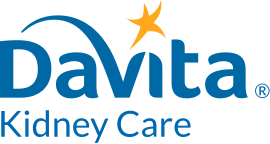What is fiber?
Dietary fiber is defined as the component of carbohydrate that cannot be digested by enzymes in the human small intestine. Fiber provides structure for plant cells. It’s found in fruits, vegetables, grains, legumes and nuts. Unlike fats, carbohydrates and proteins, fiber cannot be broken down or absorbed when passing through your digestive system.
Soluble vs. insoluble
Your body needs two types of fiber. One type is soluble fiber which dissolves in water and absorbs fluid as it passes through the digestive system, creating softer, larger stools. Food sources of soluble fiber include oat bran, apples, oranges, berries and various vegetables. Supplements such as Metamucil, Citrucel and Fiberall are also considered soluble fiber.
The other type is insoluble fiber (roughage). It absorbs water and makes stool bulkier to help bowel movements pass more easily. Examples of insoluble fiber foods are barley, corn, rice, bran, whole wheat, vegetables and apple and pear skins.
Benefits of fiber
Adequate fiber in the kidney diet can be beneficial to people with chronic kidney disease (CKD) because it:
- Keeps GI (gastrointestinal) function healthy
- Adds bulk to stool to prevent constipation
- Prevents diverticulosis (pockets inside the colon)
- Helps increase water in stool for easier bowel movements
- Promotes regularity
- Prevents hemorrhoids
- Helps control blood sugar and cholesterol
How much fiber does a person need?
The average American diet contains 5 to 15 grams of fiber a day, which is below the 14 grams of fiber for every 1,000 calories you consume, as recommended by the U.S. Dietary Guidelines. The Food and Nutrition Board suggests 25 grams of fiber a day for women and 38 grams of fiber a day for men under the age of 50. For people over age 50, women should get 21 grams of fiber a day and men should get 30 grams of fiber a day in their diet. If you’re following a low potassium, low phosphorus plan, fiber intake may be more difficult to include in your kidney diet.
Adding fiber to the kidney diet
Many people with CKD don’t get enough fiber, because many fiber sources are too high in potassium and phosphorus. Increasing your fiber intake, can cause gas, bloating and cramps. Talk to your dietitian about gradually increasing fiber and adjusting fluid intake.
Good fiber food choices for the kidney diet
These are the best high fiber foods for people with CKD:
|
Apple, unpeeled |
Figs |
|
Apricot |
Fruit cocktail |
|
Asparagus |
Grapefruit |
|
Beets |
Grape-Nut Flakes |
|
Berries |
Green beans |
|
Broccoli |
Green peas |
|
Brussels sprouts |
High-fiber white bread |
|
Cabbage, raw |
Lettuce |
|
Carrots |
Mustard greens, cooked |
|
Cauliflower |
Okra |
|
Celery |
Onion |
|
Cherries |
Peach |
|
Collard greens |
Pear, unpeeled |
|
Corn |
Plums |
|
Pineapple, raw |
Summer squash |
|
Eggplant |
Tangerines |
Constipation in people with chronic kidney disease
Sometimes fiber is not enough to relieve constipation, as the amount of fiber varies from person to person. Increasing your physical activity, taking a doctor-recommended laxative or drinking warm beverage can help ease constipation.
Tips to increase fiber in the kidney diet
- Have regular meal times so you know when you get fiber and from what.
- Eat all the allowed servings of kidney-friendly fruits and vegetables suggested by your meal plan.
- Eat peelings on fruit and vegetables when reasonable.
- Snack on unsalted popcorn and raw vegetables.
- Include a breakfast cereal with fiber (one that is approved by your dietitian).
- Eat whole fruit instead of drinking juice.
- Try fiber supplements as recommended by your dietitian.
Top 10 high-fiber recipes on DaVita.com
| Recipe | Fiber per serving |
|---|---|
|
6.3 grams |
|
|
4.3 grams |
|
|
4.8 grams |
|
|
4.0 grams |
|
|
4.0 grams |
|
|
3.9 grams |
|
|
3.9 grams |
|
|
3.8 grams |
|
|
3.8 grams |
|
|
3.6 grams |
|
|
3.5 grams |
|
|
3.4 grams |


